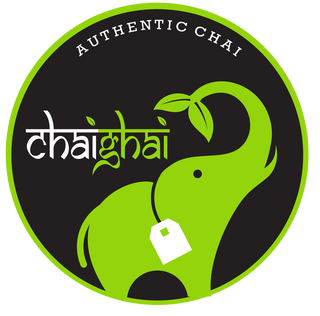“You don’t play for the crowd. You play for the country.”
– Mahendra Singh Dhoni

Cricket is a game with hundreds of years of history and tradition. It has been played in England since the mid 16th century, with similar variations of the game going back a few hundred years further. Through the mid 17th to 18th century the game we know as modern cricket took shape. The teams, rules and pitch dimensions began to resemble their current form and cricket’s innovation and popularity have only grown from there. Cricket is currently the second most popular sport in the world after soccer, a game with more than 2 billion fans worldwide; making up more than a quarter of the earth’s population. Cricket also enjoys a healthy association with tea, as tea breaks are scheduled in the middle of every match. Cricket has also played a fairly substantial role in colonialism and how the British imposed autonomy throughout their empire. British Commonwealth countries such as Australia, South Africa and India are often at the top of the world cricket rankings among nations that play the sport. When modern cricket first came to India it was British soldiers and sailors who introduced it. Lagaan, one of India’s most famous films features cricket as a way to fight back against British colonialism and indentured servitude. A similar game called Gillidanda had also been played across the Indian subcontinent for many centuries before cricket was introduced. Throughout the history of cricket in India it has been revered for the intensity in which it is played and the passion of its fan base. It is also synonymous for the chai breaks featured during intermission. In India today cricket is by far the most popular and important sport, with some likening its devotion to that of religion. There is likely to be a cricket stadium in every town across India, with coaching and training widely available, further lending to its appeal, due to this accessibility and convenience.
What Are Cricket's Origins? (wisden.com)
International Cricket Council (icc-cricket.com)
How is Cricket Played?

Cricket is played on a large field featuring an outfield, infield and pitch that is 20m by 3m. Within the pitch, two wickets are placed across from each other, made up of stumps with three vertical wood posts, supporting two bails of circular wood placed a top of them. Each team is made up of eleven players, including a bowler, whose job is to bowl the ball to the batsman. While this occurs the opposing team has two batsmen set up in front of each wicket, with the batsman across from the bowler charged with hitting the ball with a long flat fronted cricket bat. After contact is made the two batsmen run to either side of pitch, effectively changing positions, which accounts for one run. One run can also be scored for an illegal bowl, such as when the bowler’s foot crosses over the bowler’s crease or the ball is thrown too wide for the batsmen to hit. Four to six runs can further be scored if the ball is hit beyond the boundary of the field. A four is scored if the ball rolls out, and a six if the ball goes directly out without touching the field. After an over is completed, six legal throws by the bowler to the batsman, a new bowler is selected, and the fielding team also changes ends. This goes on until each side completes two innings. In its infancy a cricket ball was bowled underarm, before going through variations including round arm and settling on the preferred method of today, over arm. When the wickets are struck and either bail is put down, this constitutes a ruling of the wicket is down. There are ten ways in which a batsman can be ruled out including being: caught, bowled, leg before wicket, stumped, run out, which are the most common, as well as hit wicket, timed out, handled the ball, obstructing the field, hit the ball twice, being less so; an eleventh way, retired out is also a further possibility of being ruled out. The matches also involve umpires who referee each game to ensure its rules are followed and that it is played in a fair way.
Cricket Rules: How To Play Cricket | Rules of Sport
How Long are the Matches?

As it stands in modern cricket, there are at present a few different types of cricket matches, depending upon the governing body under which the match is played. More traditional cricket matches are often at least six hours long and can be played for up to eight hours, for three to five days, depending upon the conditions and score. These first-class cricket matches are currently the highest standard of cricket played. First-class cricket or test cricket in India features tournaments to win the Ranji Trophy, first began in 1934, with a trophy donated by Maharaja Sir Bhupinder Singh. Other such tournaments that have been played up to 2020 are ones that determine the winner of the Irani Cup and the Duleep Trophy, which constitute the highest such honours in domestic Indian cricket. Each match of test cricket features two innings by each team of 50 overs per side. For the past 20 years a shorter, more condensed form of cricket has been introduced, so that each match can be completed within a day. This type of cricket, called Twenty20 features matches that are less lengthy, averaging closer to 2 and a half hours each, with a short intermission. Two 80 minute halves are played with each team having 20 overs per single inning and a break for chai set in the middle. These shorter matches have further helped to spread cricket’s popularity worldwide, making it more consumable for fans new to the sport.
How Long Is A Cricket Match? (rookieroad.com)
Why is Cricket so Important in India?

Since the days it was first played in India in the early 18th century cricket’s popularity and importance has steadily risen. With a cricket stadium said to be in every town, access to first class coaching and training have never been higher. This has led to cricket in India, from the humble beginnings of games such as Gillidanda, to being the most revered sport across the country. The accessibility of cricket makes it possible for anyone in India, no matter their background, to get the chance to learn the game. India is also home to Sachin Tendulkar, whose 200 matches are by far the most of any cricketer and who is widely regarded as one of the most successful cricketers of all time. Other Indian cricketers such as Ranjitsinhji Vibhaji, thought of as the father of Indian cricket and Lala Amarnath, India’s first test captain after India’s independence from England helped to spread pride in the game throughout the Indian subcontinent. This pride can be seen as a form of self-determination, a symbol of what is possible when seeking to overcome obstacles such as those that English rule imposed upon India. A movie such as Lagaan is further proof to the importance that cricket can play in giving people a chance and a voice to prevail over oppression imposed by the ruling class, uniting all Indians in the notion that anything is possible when working together.
Importance of cricket in India I Cricketfile I
The History of Cricket In India | The Spirit of Cricket | The Spirit of Cricket (stevewaugh.com.au)
When and Why is There a Tea Break in Cricket?

Since cricket matches last for many hours, often over many days, it is important to have regular breaks for rest, hydration and refueling. While match length and duration vary according to different cricket tournaments, one thing that is universal to all is the allotment for tea time, scheduled during each half. Chai in India is synonymous with cricket. There is even a tournament in India called the Chai Wala Tape Ball Championship, which serves as a strong example of the partnership between cricket and chai. These chai breaks occur during the intermission of each cricket match, after a certain amount of overs or an inning has been played. It is common practice for chaiwalas to set up their stands within or around a cricket stadium in order to easily serve cricketers or spectators. The act of enjoying chai between competitors and fans of opposing teams gives each a break from the contest and allows the rivals to participate in the practice together, during the height of competition. The sportsmanship and reverence between teams and spectators during a cricket match has spread out from the comfort one can take from a cup of chai. This allows teams to compete hard, but also have respect for each other in their mutual quest towards their goal of winning. The masala spices found in Mummyji’s Masala Chai have health benefits in both the spiritual and physical realm and we can see top athletes utilizing both.
How Long Does a Cricket Match Last? (With a Snack Break Schedule!) – Cricket Mastery
“I have failed more times than I have succeeded, but I never gave up, and will never give up, till my last breath, and that’s what cricket has taught me.”
– Yuvraj Singh

With its myriad of rules, structure and cultural significance cricket has a long history in England and its many Commonwealth countries. In India variations of cricket, including Gillidanda, had been played for centuries before it was introduced to the country in the infancy of British colonialization. Since then the stature of Indian cricket has only increased worldwide, as India has become a powerhouse nation in international cricket. Cricket also shares a strong connection with chai in India. Breaks for tea have long been standard practice worked into the schedule of each cricket match. The elegance and grace with which cricket is played helps to serve as a sense of pride for fans and spectators of the sport. Cricket has become India’s most important sport because of this identity and its ability to unite the country in collective self-determination. Cricket is the second largest sport in the world that no body knows about. We hope this guide informed you more on exactly what it is, and why its so important in India. Cricket can be seen as a way for people to come together to enjoy the sport and also use it as a platform to address larger political and social issues.


